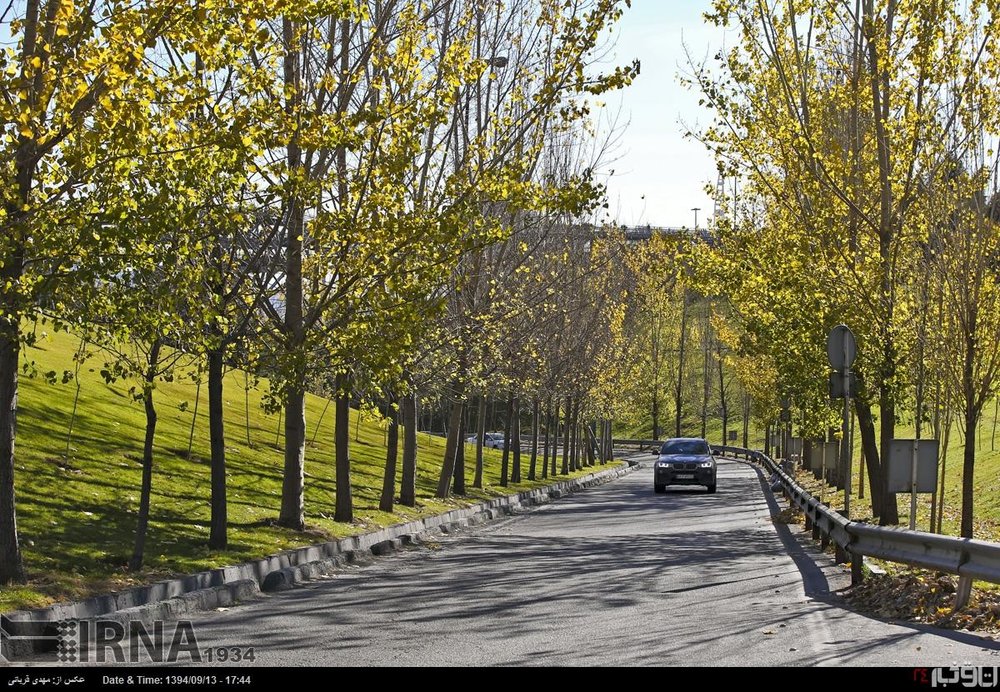24/7 LEZ scheme aim to help combat air pollution in Tehran

TEHRAN —Low Emission Zone (LEZ), a traffic pollution charge scheme, will become operational twenty four-seven across Tehran as of the beginning of [the seventh Iranian calendar month of] Aban (October 23), in a bid to help fight air pollution in the megacity.
Once the scheme takes effect, all vehicles which do not have up-to-date inspection stickers, which guarantee standard emission levels, will be fined, ISNA news agency quoted Mohsen Pourseyyed Aqaei, deputy mayor of Tehran for traffic and transport affairs as saying on Sunday.
The scheme will be implemented with the aim of reducing the exhaust gas emissions of diesel-powered commercial vehicles in the capital in order to address air pollution especially during cold seasons. Vehicles that do not conform to more stringent emission standards are charged and the others can enter the controlled zone free of charge.
Pourseyyed Aqaei explained that all trucks are required to have waybill as well as vehicle inspection stickers to be allowed to ply the city or they will be fined.
Additionally, all buses, must have vehicle inspection since the beginning of autumn, he highlighted.
So far some 88 percent of the buses have passed vehicle inspection and some 700 of them are repaired, he noted, adding that, it is projected that some 95 percent of the buses will undergo inspection procedures by the beginning of autumn.
Elsewhere in his remarks he explained that two Iranian companies will convert 50 percent of the motorcycles from carbureted to fuel injection since October 23 which would cut emission produced by these motorcycles by two-thirds.
This would cost less than 10 million rials (nearly $240) and Tehran Municipality will partially cover the expenses of this scheme, he stated.
However, he added that it is not possible to replace all motorcycles in the capital with electric ones within 6 months or a year.
Pourseyyed Aqaei further commented on transit-oriented development (TOD) saying that there is TOD committee at municipality traffic and transport affairs directorate which aim to increase spaces for cycling, and pedestrian areas.
In urban planning, a transit-oriented development is a type of urban development that maximizes the amount of residential, business and leisure space within walking distance of public transport.
He also noted that in near future some 5,000 bicycles will be available for Tehrani citizens to use free of charge everywhere at any time.
Stubborn air pollution in Tehran
According to World Health Organization 2016 report, Tehran is one of the most air polluted cities in the world. Tehran is ranked 12th among 26 megacities in terms of ambient PM10 levels. After Cairo, Tehran is the most polluted non-Asian megacity. In 2016, the annual ambient level of PM10 was estimated at 77 micrograms per cubic meter. This is almost four times the WHO’s recommended threshold of 20 micrograms per cubic meter.
Using the Global Burden of Disease (GBD) methodology and Integrated Exposure-Response (IER) functions, as outlined by the recent World Bank-Institute for Health Metrics and Evaluation (IHME) publication the research indicates that slightly more than 4,000 people die prematurely from ambient PM2.5 air pollution in Tehran per year.
According to a report by World Bank published in April 2018 there are about 4.24 million vehicles in Tehran. Cars are the largest vehicle type, with a total fleet of 3.37 million, or 80 percent of all vehicles. The second largest category, in terms of sheer numbers, are motorcycles, amounting to a total of 0.76 million, or 18 percent of total vehicles. The smallest category is heavy-duty vehicles, with a total of 0.1 million vehicles, or about 2 percent of total vehicles in the streets of Tehran.
Even though cars are the most abundant and the most congestion-causing vehicle type on the streets of the capital, they only contribute about 3 percent of the city’s mobile PM pollution. Similarly, despite motorcycles being the most pollution intensive vehicle per passenger, they only contribute to about 12 percent of the total mobile PM emissions. In turn, heavy-duty vehicles contribute about 85 percent to mobile PM emissions. Amongst heavy-duty vehicles, private sector buses (35 percent), followed by Tehran municipal buses (28 percent), and trucks (28 percent), contribute the largest shares to the pollution load. Heavy-duty vehicles mostly run on diesel, which has a much higher PM emissions factor than petroleum or natural gas.
MQ/MG

Leave a Comment